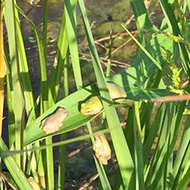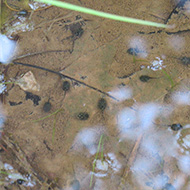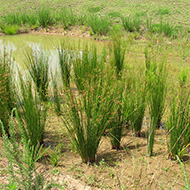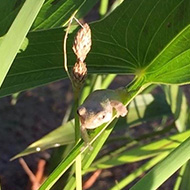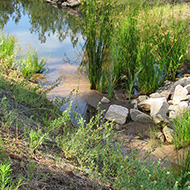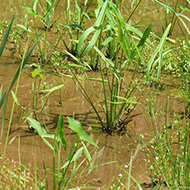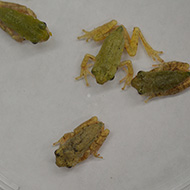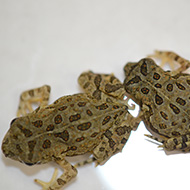Hopping, Jumping, Peeping, Croaking, and Splashing. It's That Time Again!
Hopping, Jumping, Peeping, Croaking, and Splashing. It's That Time Again!
By Bill Willis and Amanda Weaver
August 17, 2018

Low areas, like our retention basin, often fill with water after a good rainstorm. If this temporal, or short-term, water body remains for weeks, a female frog or toad may deposit egg masses in it. A "traditional" tadpole-in-the-water type life cycle will evolve.
That gelatinous egg mass with the embryos (called frogspawns) will change dramatically. Within days the embryos develop into a swarm of fish-like oval bodied tadpoles. The pollywogs, as they are also called, have gills and are predominately herbaceous, eating algae, during their aquatic phase. Eventually they’ll reabsorb their tail and grow legs and lungs. This is a process called metamorphosis. When legs are completely formed, they emerge from the water as air breathing miniature adult amphibians. After frogs emerge, the ground around the pond will literally be hopping and jumping with life.
If you want to raise your own tadpoles, it is possible to collect an egg mass and raise tadpoles, frogs and toads in an aquarium. The frog spawn is a gelatinous clump, deposited, partially submerged, at the edge of the water. The toad spawn is a double row strand of eggs entangled in aquatic vegetation. The time required reaching “little adult” is dependent on species, food availability, and water temperature. Be sure to provide a way for the young to get out of the water to prevent drowning and release them into a suitable habitat. While the frogs will return to the water, the toads will not. Both the toads and frogs are now carnivorous.
All critters photographed for this article were returned unharmed to their point of collection.
